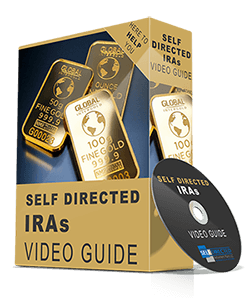Do you want to save money on taxes and boost your retirement savings? If yes, you’ve come to the right place. Mega backdoor Roth is the perfect tool for getting around the tax rules preventing you from accessing the benefits of a Roth account due to falling into the high-income group.
This post explains all the necessary details associated with the working and advantages of mega backdoor Roth.
So, without further ado, let’s get into it!
What is a Mega Backdoor Roth?
The mega backdoor Roth is a contribution method that allows you to contribute after-tax dollars to a Roth IRA. Mega backdoor Roth strategy can be a great way to get more money into a Roth IRA, but there are some things you need to know before you try it.
What’s the Process of a Mega Backdoor Roth?
Pre-tax contributions to 401(k) plans are limited to $19,500 for those under 50 and $26,000 for those over 50. The IRS’s overall contribution cap is $58,000 ($64,500 for those over 50), nevertheless. The average person is unaware that they can make contributions to their 401(k) accounts of up to $64,500.
If your 401(k) plan permits it, you can contribute an extra $38,500 in after-tax contributions after you’ve made the maximum tax-deductible contribution of $19,500 (or $26,000 if you’re 50 or older). If your plan permits in-service distributions or rollovers, you can then move that $38,500 to a Roth IRA.
However, if your employer matches your contribution, that amount is deducted from your overall contribution cap of $58,000 ($64,500 if you’re 50 or older). For instance, if you contribute $26,000 to a 401(k) plan and receive $14,000 in matching funds from your employer, it counts as $40,000 of your total $64,500 contribution.
You are therefore limited to making an additional after-tax contribution of $24,500 that can be converted to a Roth IRA.
What are the Benefits of a Mega Backdoor Roth?
If you invest $38,500 in your 401(k) after-taxes and it increases by $30,000 by the time you retire, you won’t be required to pay taxes on the $38,500 you first deposited because it was done so. However, since the money does not grow tax-free in a conventional 401(k) plan, you will have to pay taxes on the $30,000 in investment growth.
However, if you transfer that $38,500 to a Roth IRA in the same year that you contribute to your 401(k) after taxes, you won’t have to pay income tax on the $30,000 in investment growth and would be able to withdraw money tax-free when you retire.
This is a means to significantly increase the amount of money in that Roth. That’s why it is called the mega backdoor Roth!
What is the Contribution Limit for a Mega Backdoor Roth?
The contribution limit for a mega backdoor Roth is $40,500 after-tax dollars in the year 2022. However, this is apart from the pre-tax $20,500 401(k) contribution limit, which stays in your 401(k) account. Thus, your total contribution limit comes to $61,000.
How Much Can You Convert in a Mega Backdoor Roth?
In a workplace 401(k), the maximum amount that can be saved in 2022 is $61,000, or $67,500 for those who are over 50. How much of that can be a contribution after taxes? The amount fluctuates according to each person’s circumstances. Here’s how to figure it out:
- Start with the $20,500 elective deferral cap in 2022 ($27,000 when catch-up contributions for people over 50 are included). Add any employer contributions or non-elective contributions after that.
- This is deducted from the overall cap of $61,000 or $67,500. The amount an individual can contribute with after-tax money is the balance.
What is the Process of the Mega Backdoor Roth?
If you already have Roth IRA or Roth 401 (k), you need to complete the following process for obtaining the mega backdoor Roth:
- Maximize your employee’s 401(k), 403(b), 457, or Solo 401(k) plan contribution – Pre-tax contributions up to $20,500 would be the maximum (or $27,000 for individuals over 50).
- Contribute to the retirement plan after-taxes – Depending on what the 401(k) allows and whether the employer matches contributions, there are restrictions on how much you can put in.
- Ask for a quick in-service contribution withdrawal of the after-tax amount – This would be made possible by the administrator of the 401(k). The IRS allows investors to divide the withdrawal, sending the investment earnings to a traditional IRA on a tax-deferred basis while solely sending the after-tax contributions to the Roth IRA.
- Transfer the funds to a Roth IRA or Roth 401(k) – Tax-free growth is possible after the funds are in a Roth.
What are the Alternatives to Mega Backdoor Roth?
Not everyone should invest in the massive backdoor Roth. To achieve it, many requirements must be satisfied. There are additional Roth options to think about if those circumstances don’t hold true.
- An individual could be allowed to use the mega backdoor after leaving their work if the retirement plan restricts in-service withdrawals or in-plan rollovers.
- A high earner can be eligible to make direct after-tax contributions to a Roth IRA through the Roth front door.
- Individuals may contribute directly to a Roth 401(k), up to the permitted limitations, if their employer offers one.
- If a high earner doesn’t have access to a retirement plan that permits after-tax contributions or in-service withdrawals, they may want to think about converting their traditional IRA to a backdoor Roth IRA.
FAQs
Will the Roth backdoor be stopped?
The backdoor Roth technique has come under fire for unjustly favoring highly compensated workers in businesses that create their benefit plans to enable these tax shelters.
Mega backdoor Roth IRAs would eventually be banned under the conditions of the Build Back Better plan, which President Biden stated. The law has been adopted by the House, but as of May 2022, the Senate has not done so.
Is a mega backdoor Roth worth it?
If you have additional money to put away for retirement after maxing out your 401(k) and you aren’t eligible for direct Roth IRA contributions, it can be worthwhile to open a massive backdoor Roth. It’s generally a good idea to discuss your specific position with a financial counselor because this method can have complex tax ramifications.
Who is eligible for a mega backdoor Roth?
If you have the standard 401(k) with your employer and your plan permits post-tax contributions and in-service pay-outs, you might be qualified for a giant backdoor Roth. As part of your massive backdoor Roth approach, you could also make post-tax contributions of up to $40,500 in addition to pre-tax ones that are limited to $20,500 in 2022.

Rick Pendykoski is the owner of Self Directed Retirement Plans LLC, a retirement planning company based in Goodyear, AZ. He has over three decades of experience working with investments and retirement planning, and over the last ten years has turned his focus to self-directed ira accounts and alternative investments. If you need help and guidance with traditional or alternative investments, call him today (866) 639-0066.




